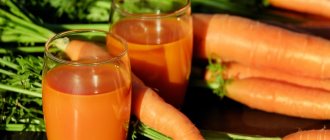What is cholesterol and its role in the body
In addition to fats (lipids), the body also contains fat-like substances (lipoids).
Lipoids include phospholipids, glycolipids and steroids, which are essential components of all biological membranes of the body (cell membranes). The membranes are 60% proteins and 40% lipids. Cholesterol (or cholesterol) also belongs to the steroid structure lipoids. Thus, without cholesterol it is impossible for cells to exist as independent entities.
Cholesterol is a precursor to:
- bile acids (necessary for the emulsification of dietary fats and normal digestion);
- steroid hormones (adrenal cortex, male and female sex hormones);
- vitamin D (formed from cholesterol only under the influence of sunlight; without this vitamin, hematopoiesis and bone tissue formation are impossible).
Especially a lot of cholesterol is localized in brain cells.
Where does cholesterol come from?
Due to the special importance of this substance for the normal functioning of the body, nature did not rely on its accidental intake from food, but worked out the mechanism for producing cholesterol in the liver. At the same time, it also comes from food. Depending on the cholesterol received from the outside, the liver adjusts the amount of the produced organic compound to the current needs of the body, maintaining the required level in the bloodstream, from where, as needed, the substance is supplied to the construction of membranes. Thus, a person's ability to regulate blood cholesterol levels by choosing a special diet is minimal.
The human body contains about 140 g of cholesterol, of which about 1.2 g is consumed per day. To maintain balance, the same amount must come from food and be synthesized in the body. This is what happens - 0.4 g of cholesterol comes from food, and the liver is left to synthesize the missing 0.8 g.
Good and bad cholesterol
If you do an analysis for total cholesterol, then its optimal level should not be higher than 5.2 mmol/l. With a more thorough blood test, an organic compound of high (which is usually called good) and low (called bad) density is determined separately. To understand what is meant by these types of cholesterol, you must first understand how fats are transported in the human body.
Fatty acids, into which dietary fats are broken down in the intestines, are carried by special particles - chylomicrons, and cholesterol is transported by low-density lipoproteins (LDL) and high-density lipoproteins (HDL). LDL carries and deposits the substance in the walls of arteries, and HDL moves cholesterol to the liver and transfers it to other particles. Hence the definition of these two types of lipoproteins as “bad” and “good”.
Cholesterol is the cause of atherosclerosis
High cholesterol levels by themselves are not accompanied by any symptoms. Symptoms occur in atherosclerosis, which is a consequence of excess organic matter.
With atherosclerotic disease, the vessels of the heart, brain and other organs are affected with the formation of atherosclerotic plaques in the arteries that block their lumen. In this case, women may experience disturbances in the blood supply to organs and the development of the following complications:
- headaches;
- dizziness;
- myocardial infarction;
- cerebral stroke;
- thrombosis;
- necrosis of toes.
The composition of atherosclerotic plaques includes cholesterol, hence its role in the development of these lesions is clear - cholesterol (namely LDL) is a risk factor for atherosclerosis. The high content of HDL reduces and prevents the substance from sticking to the walls of blood vessels.
A high concentration of cholesterol over a long period can lead to the formation of serious pathologies (coronary heart disorders, cerebral stroke, kidney and liver failure, etc.).
How and with what to reduce cholesterol without drugs
Bad cholesterol in the blood can be lowered at home by eating more plant foods (vegetables, fruits, root vegetables, berries, nuts and legumes) and foods containing omega-3 fatty acids (linseed oil, nuts, cold-water fish) and even using medicinal fasting to lower cholesterol. Soluble insoluble fiber makes it difficult to absorb cholesterol from food in the gastrointestinal tract (gastrointestinal tract). At home, it’s easy to track your diet to reduce low-density cholesterol by adhering to the following rules:
- daily fiber intake should remain at the level of 30 - 40 grams - this is quite a lot (100 g of carrots contain about 2.8 g of fiber), so you won’t be able to gain that much right off the bat and will have to gradually - over a month - one and a half - gain the desired concentration;
- do not visit fast food restaurants (cafes) and try to give up processed foods, as well as margarine-based products (contain triglycerides), but egg yolks are not as scary as they are usually imagined and 2-3 per week are absolutely safe;
- give preference to dietary suppliers of protein (protein) - fish, poultry and lean varieties (or cuts) of meat.
Nutritional control will reduce low-density cholesterol in the blood by 20–30% (this is the proportion of its concentration in the body determined by diet). Only medications - statins - can reduce harmful cholesterol in the blood to a greater extent.
How to reduce cholesterol without pills?
In order to reduce the level of TC in the blood without pills (without drugs), you will need to adhere to a strict diet, as much as you have the strength and patience, use folk remedies to lower cholesterol, exercise more, adhere to the rules of proper nutrition and give up junk food: fast food, processed foods and containing triglycerides. Read more: the best diets for cholesterol plaques.
How to reduce cholesterol with exercise?
Exercise should be performed for at least 30 minutes a day while increasing your pulse (heart rate). This can be any physical exercise, but it is better to choose circuit training methods (when all muscle groups are involved during one session). Swimming, running (for additional stress on your arms, you can take small dumbbells and run with them) and elements of physiotherapy for atherosclerosis are well suited.
What should you eat to reduce cholesterol in your blood vessels?
You need to eat more foods of plant origin: root vegetables, fruits, vegetables, berries, some legumes - fiber not only removes cholesterol from the body, but also prevents its absorption in the stomach from food. In addition, plant foods - replacing animal foods - help to lose weight. Meat should be alternated with raba, giving preference to cold-water, which contains omega-3 acids that break down cholesterol. See also: foods that increase and decrease blood cholesterol levels.
How to reduce cholesterol with food?
You need to eat at least 30–40 g of fiber per day. It is difficult to immediately reach this level (an ordinary person eats 10–12 g per day), so you should gradually increase the dose. Eat legumes (for example, beans) every day - once you get used to them, your stomach will stop experiencing discomfort. Preference should be given to vegetables and fruits that retain their shape after heat treatment - they are rich in insoluble fiber. Three times a week you should give up meat in favor of fish (or even have vegetarian days, but you need to be able to select foods according to the amino acid composition so as not to deprive the body of sources of essential amino acids), preferably cold-water (but eat every day because of the mercury it contains). it is not recommended). Read more: list of foods for cholesterol.
Causes of high blood cholesterol
The concentration of the substance in the body is influenced by the levels of thyroid hormones and estrogen, as well as the cholesterol content in the foods consumed.
Monounsaturated oleic acid has virtually no effect on cholesterol levels; its effect is comparable to that of other fatty acids. When saturated animal fats are consumed in food, the level of the organic compound in the bloodstream increases. They are found in large quantities in the following products of animal origin: butter; beef, lamb, pork fat; cocoa bean butter.
The degree to which cholesterol levels increase varies from person to person. The role of genetic factors cannot be ruled out.
An unhealthy lifestyle, as well as some diseases and lifestyle features, lead to increased cholesterol levels in women:
- smoking;
- alcohol abuse;
- low physical activity;
- pregnancy;
- menopause;
- diabetes.
Cholesterol levels are increased by trans isomers of monounsaturated fatty acids.
Treatment of high cholesterol
To normalize high cholesterol, you should include the following foods in your diet:
- fruits and vegetables;
- low-fat dairy products;
- dishes prepared by steaming or boiling;
- white meat.
With a slight increase in cholesterol levels, its content is normalized by physical activity (if possible, daily jogging for a distance of 4 km or walking for 1-1.5 hours).
Fast food increases cholesterol levels, so you should take your diet seriously.
If levels of the substance are high, your doctor may prescribe medication. Statins are mainly prescribed to block the synthesis of an organic compound in the liver.
Choice of fish oil or camelina oil
The consumption of polyunsaturated fatty acids (PUFAs) leads to a decrease and normalization of cholesterol levels. Of these, only linoleic and linolenic fatty acids are considered essential. All other FAs (both saturated and monounsaturated) are synthesized in the human body from carbohydrates and proteins.
Of the PUFAs, linoleic acid, which belongs to the omega-6 fatty acid family, significantly reduces cholesterol levels. Another PUFA, linolenic acid, belongs to the omega-3 family of fatty acids. It doesn't lower cholesterol by itself, but it does reduce triglycerides in the blood, and replacing saturated fatty acids in the diet with fats containing omega-3s reduces the level of the bad kind. Thus, linolenic acid acts similarly to linoleic acid.
This implies the importance of the presence of both acids in the diet. The need for fatty acids of the omega-3 and omega-6 families is determined based on the quantity required to prevent and eliminate their deficiency; an indirect sign of the sufficiency of these acids is their concentration in organs and tissues. According to the standards of Rospotrebnadzor of the Russian Federation, the adequate level of consumption of fatty acids of the omega-3 family is 1 g, the upper permissible level of consumption is 3 g. For fatty acids of the omega-6 family, the adequate level is defined as 10 g, the upper permissible level is not indicated.
In addition to the amount of omega-3 and omega-6 fatty acids in the diet separately, the ratio between them is also important. Omega-6 should not exceed omega-3 by more than 10 times, since these acids compete for common resources in the body. With an excess of one, the absorption of the other deteriorates. The most optimal and evolutionarily established ratio between omega-3 and omega-6 PUFAs is considered to be a ratio from 1:2 to 1:10.
In the modern human diet, this proportion has changed sharply in favor of omega-6 and reaches 1:20-1:30, due to the greater availability of sunflower oil for the population, a reduction in the fish diet and the depletion of omega-3 fatty acids in eggs, milk and animal meat, fed with combined feed and grain crops. To correct the current situation, dietary correction is necessary, i.e. replacing part of the sunflower oil with fish oil or camelina, mustard or linseed oil.
Abuse of low-fat diets can cause high cholesterol (when the body does not receive it through diet, it begins to actively produce the substance itself).
Eating greens
Unlike herbivores, the human body is adapted to temporarily increase cholesterol levels in the blood. He learned how to effectively get rid of its excess. Products with plant fiber promote the removal of organic compounds, which stimulate the growth of lacto- and bifidobacteria, which remove bile acids from the intestines, from which, in turn, cholesterol is synthesized in the liver.
Fermented milk products help maintain healthy microflora.
Greens are a rich source of antioxidants, which prevent cholesterol from going rancid and preventing it from depositing on the walls of blood vessels. Products of plant origin do not contain it; instead, they contain compounds of a similar nature (phytosterols). Due to their chemical similarity to cholesterol, phytosterols compete with it in the body and displace it, impairing its absorption and stimulating excretion. Thus, regular plant food reduces blood cholesterol levels. At the same time, phytosterols do not accumulate in the body, since they are poorly absorbed in the gastrointestinal tract.
In most cases, high cholesterol levels in the body are caused by non-compliance with the rules of a healthy lifestyle. Normalize your weight, give up unhealthy foods, play sports and the level of the substance will gradually return to normal. In more serious cases, it is important to strictly adhere to the treatment regimen prescribed by the specialist.
How to lower cholesterol without drugs
cardiology department No. 1, cardiologist Artemyeva A.I.
Cholesterol at elevated levels is dangerous because, as a result of blood viscosity, clots can form that attach to the walls of the arteries, creating problems for normal blood circulation. Blood clots are gradually created from cholesterol plaques, which can block the lumen in the vessels of the circulatory system. Such blockage of blood vessels is a provoking factor for most cardiovascular diseases; the most unexpected thing is instant death as a result of a detached blood clot.
However, cholesterol is only one of several risk factors for the development of atherosclerosis. Expert studies indicate that in countries where the population has, on average, high cholesterol levels, there is a higher incidence of various cardiovascular diseases.
People who are overweight, have heart disease, hypertension, and men and women over 40 years of age should monitor their cholesterol levels especially carefully and regularly. You can maintain normal lipid levels through diet and an active lifestyle. And if the level is already increased, how to reduce cholesterol without medications? What foods lower blood cholesterol?
Ways to lower blood cholesterol without drugs
The use of cholesterol-lowering foods in your daily diet is certainly the main among all possible options for combating high lipid levels. Now we will talk about other, equally important ways to reduce cholesterol without drugs. Not many people know that low levels of good, “healthy” cholesterol also play a decisive role in the development of atherosclerosis, blockage of blood vessels, since this type of cholesterol fights the formation of the notorious plaques. Therefore, a decrease in its level in combination with increased “bad” cholesterol is the most dangerous combination that increases the risk of atherosclerosis and CVD.
You can raise the level of “good” cholesterol and reduce “bad” cholesterol with the help of physical activity. Renowned cardiologists around the world claim that physical exercise reduces the accumulation of cholesterol plaques in the arteries. Physical exercise can cleanse the blood of excess fat from foods. If lipids do not manage to stay in the vessels for a long time, they have no chance of settling on their walls. Moreover, it is running that contributes to a rapid decrease in the level of fat obtained from food in the arteries. According to experts, runners are 70% faster and better able to get rid of fat in their blood vessels than people who simply engage in physical exercise.
Even if you just keep your body and muscle mass in good shape with the help of physical labor in the fresh air at the dacha, with the help of gymnastics, dancing and just long walks in the park area - this gives a positive mood, a feeling of joy, happiness, and increases both emotional and muscle tone . Which has only a positive effect on the condition of blood vessels. For older people or those already suffering from various vascular and heart diseases, a daily 40-minute moderate walk reduces the risk of death from stroke or heart attack by 50%.
However, in elderly people, when walking, the pulse should not increase from normal by more than 15 beats per minute. Everything should be done in moderation, and excessive exercise can worsen the condition and reduce the production of good cholesterol.
If fat deposits in a woman or man are concentrated in the waist area and the body resembles an apple rather than a pear, this is a risk factor for the development of diabetes, angina pectoris, hypertension and atherosclerosis.
We won’t talk much about the dangers of smoking. This is an obvious reason for the deterioration in quality and life expectancy in both women and men. Everyone knows that this addiction affects the entire body; there is no organ that is not exposed to the harmful effects of smoking - this is the brain, kidneys, liver and bladder, blood vessels and gonads. In addition to increasing the risk of developing atherosclerosis, smoking actively helps cancer cells grow in the body. In addition, modern cigarettes contain a minimum of tobacco and a maximum of other harmful substances and carcinogens. Tobacco smoke contains a sufficient amount of tobacco tar, which consists of substances that cause cancer in humans and animals. It is enough to smear a rabbit's ear with this tar several times, and after some time a cancerous tumor will grow in the animal.
But with alcohol the situation is a little different. Naturally, its excessive consumption destroys the entire body, the pancreas, liver, and cardiovascular system. As for daily consumption of 50 grams. strong high-quality alcohol or a glass of dry red wine - for increasing good cholesterol and reducing bad cholesterol - this is a proven benefit. The main condition is no more than 50 grams. strong and 200 gr. weak alcoholic drink! This method of combating cholesterol is strictly excluded for persons with hypertension, diabetes mellitus or other diseases for which drinking alcohol is not permissible.
However, there is also the opposite opinion, for example, the Association of Cardiologists in the USA does not recommend that anyone use wine and strong alcohol as a drink - a product that lowers blood cholesterol.
Green tea. By eliminating coffee and replacing it with high-quality weak green tea, you can reduce cholesterol levels by 15% (but not bagged). Flavonoids contained in green tea help strengthen capillaries, and daily moderate consumption of high-quality tea also reduces the amount of harmful lipids and increases the level of good cholesterol in the blood.
Juice therapy is one of the methods for reducing cholesterol without drugs. By chance, nutritionists discovered the amazing property of juice therapy to reduce cholesterol. Having developed a course to combat cellulite, they discovered the ability of this treatment to reduce the amount of fat in the blood. In 5 days of drinking vegetable and fruit juices you can reduce cholesterol without drugs, naturally the juice should be freshly squeezed: 1 day: celery juice 70 g. + carrot juice 130 g. Day 2: beet juice 70 g. + carrot juice - 100 g. + cucumber juice 70 g. Beetroot juice should not be consumed immediately after pressing; it should be left in the refrigerator for 2-3 hours so that harmful substances evaporate from it. Day 3: apple juice 70 gr. + celery juice 70 gr. + carrot juice 130 gr. Day 4: cabbage juice 50 gr. + carrot juice 130 gr. Day 5: orange juice 130 gr.
Some folk remedies in the fight against cholesterol
There are countless different folk recipes that cleanse the walls of the arteries, which have a positive effect on the overall health of a person, however, not all methods of traditional medicine are suitable for everyone, since many people may have increased individual sensitivity, possible allergic reactions to certain medicinal herbs or products. Therefore, moderation and caution should be observed during any treatment, even with traditional, proven methods:
You will need: dill seeds 0.5 cup, valerian root 1 tbsp. spoon, 1 glass of honey. The chopped root, dill and honey should be mixed thoroughly. Then add 1 liter of boiling water to the mixture and let it sit for 24 hours. Keep the resulting infusion in the refrigerator and consume 1 tbsp. spoon 3 times a day 30 minutes before meals.
You will need: 2 cups olive oil, 10 garlic cloves. This is a fairly simple way to create garlic oil, which can be used for any dish, as a seasoning for salads and other foods. Simply peel the garlic, squeeze it through a garlic press, and steep it in olive oil for a week—a great, drug-free cholesterol-lowering garlic oil on your table.
You will need: 350 g garlic, 200 gr. alcohol This is enough to make a garlic tincture; it is better to grind this amount of garlic in a meat grinder and pour a glass of alcohol or vodka, let it brew in a dark place for 10 days. This fragrant product should be consumed gradually, starting with 2 drops, increasing to 15-20 drops over the course of a week, 3 times a day before meals, preferably diluting the tincture with milk. Then also stop taking from 20 drops to 2 over the next week. This method should not be repeated often, once every 3 years is enough.
What foods lower blood cholesterol?
Avocado. Among fruits, this is the richest fruit in the presence of phytosterols; 100 grams of this product contains 76 mg. beta-sitosterol. That is, if you eat 7 tablespoons or half an avocado per day for 21 days, it reduces the level of triglycerides, total cholesterol by 8% and increases the amount of healthy HDL cholesterol by 15%.
The following plant foods are also rich in phytosterols - plant sterols that control and lower blood cholesterol. Eating these products, for example, 60 grams of almonds daily increases good cholesterol by 6% and reduces bad cholesterol by 7%.
Product name Amount of phytosterol per 100 grams Wheat germ 400 mg Brown rice bran 400 mg Sesame seeds 400 mg Sunflower seeds 300 mg Pistachios 300 mg Pumpkin seeds 265 mg Pine nuts 200 mg Flaxseed 200 mg Almonds 200 mg Olive oil 150 mg Avocado 76 mg Olive oil One tablespoon contains 22 mg of phytosterols, which has a positive effect on the ratio of cholesterol in the blood. You can also use olive oil as a replacement for saturated fat, which reduces bad cholesterol by 18%.
Unrefined olive oil has the ability to reduce inflammation and relax the endothelium on the walls of the arteries, and if possible, it is better to consume it. Wild salmon and sardines - fish oil These are record holders for the content of Omega 3 - very healthy fatty acids, and sardines and wild salmon, unlike other sea fish, contain the least amount of mercury.
Red salmon - sockeye salmon contains a lot of astaxanthin, it is a powerful antioxidant, but unfortunately sockeye salmon is practically not amenable to cultivation on fish farms. The American Association for the Study of Heart Disease strongly recommends regular consumption of fish oil, a natural statin, to reduce cholesterol, since the omega-3 it contains regulates lipid production.
It should be borne in mind that eating any fried fish negates all its beneficial properties, since all beneficial substances are destroyed. This means it’s better to eat it boiled or baked; we won’t talk about cooking it in a microwave oven at all; everyone knows about the dangers of any food exposed to microwaves.
Blueberries, raspberries, strawberries, cranberries, lingonberries, chokeberries, pomegranate, red grapes They contain polyphenols, which also stimulate the production of healthy HDL cholesterol in the blood. By consuming 150 grams of any of these berries in the form of puree, juice or nectar, good cholesterol can increase by 5% in 2 months.
The champion among these berries is cranberry juice; a month after daily consumption of a small amount of juice per day, the level of good cholesterol increases by 10%; it also contains a lot of antioxidants, which also help cleanse the body and prevent the development of malignant tumors. The use of juices can be combined: blueberry + grape, pomegranate + cranberry. All purple, blue, and red fruits contain polyphenols that stimulate the production of healthy cholesterol.
Oatmeal and whole grains are a healthy way to lower cholesterol. If you overcome an old habit, for example, having sandwiches for breakfast, and smoothly switch to morning oatmeal, and also eat foods containing whole grains (rye, wheat, barley, buckwheat, millet), the abundance of fiber will have a positive effect not only on cholesterol levels, but also on the state of the gastrointestinal tract and the entire body as a whole.
Flax seeds can also be called a strong natural statin because flax seeds contain omega-3 fatty acids that help normalize cholesterol levels.
Beans and soy products They reduce cholesterol in the blood due to the abundance of soluble fiber in them; in addition, in terms of protein content, these products can replace red meat, which is harmful to the heart and blood vessels.
You can eat fermented soy products - Tempeh, miso, tofu.
Garlic This is the most powerful natural statin. Garlic slows down the production of low-density lipoproteins, but to feel the effect, it should be consumed for a fairly long time, at least a month or even 3 months. The disadvantage of this product is that not everyone can consume hot spices (garlic is contraindicated for gastritis, ulcers, and other gastrointestinal diseases).
Red Fermented Rice In Asian cuisine, red fermented rice extract was previously used as a flavoring and coloring agent. It was then discovered that monacolin K (a fermentation by-product) lowers triglyceride levels, but the sale of this natural statin is now banned in some countries.
White cabbage. Among other vegetables that can reduce cholesterol and remove it from the body, it is the leader. Moreover, its use is useful in any form - pickled, stewed, or fresh - it should be in the diet of a person seeking to reduce cholesterol, at least 100 grams daily.
Greens in any form Artichoke, spinach, lettuce, parsley, dill, onion - leafy vegetables, greens are quite rich in lutein, dietary fiber, carotenoids, which reduce low-density cholesterol and reduce the risk of developing cardiovascular diseases.
Replace regular white bread, rolls and cookies with oatmeal cookies, bran bread, coarsely ground, whole grain crackers. Grapeseed oil and rice bran oil also improve the proper ratio of bad to good cholesterol.
Sea buckthorn, apricots, dried apricots, prunes, carrots, onions and garlic are also very affordable cholesterol-lowering foods for every Russian. Red grapes, red wine, and peanuts contain resveratrol, which also helps improve good cholesterol and reduce bad cholesterol.
Menu with cholesterol-lowering foods
Breakfast: Oatmeal, or boiled brown rice, or any cereal porridge with olive oil, egg white omelette, barley coffee, chicory with milk, green tea, maybe with honey. Whole grain bread with bran, oatmeal cookies
Lunch: Apple, any fruit, berries, rosehip infusion, whole grain crackers
Lunch: Vegetarian vegetable soup - carrots, peas, potatoes, onions, green beans, corn Baked or boiled fish with any vegetable salad Carrot, pomegranate, cranberry juice - any freshly squeezed fruit or vegetable juice Whole grain wheat bread
Afternoon snack: 2 fruits, or carrot salad with olive oil
Dinner: Mashed potatoes with boiled lean beef Low-fat cottage cheese Green tea, optional with honey or milk Lenten “Maria” cookies. Before bed: Kefir or yogurt.











